Soft and chewy mochi skin filled with sweet white bean paste and a whole juicy mandarin
What is mochi?
If you aren't familiar with mochi, mochi is a Japanese treat made from glutinous rice. Traditionally it is pound into a paste with water and enjoyed as it is, rolled in flavourings like roasted soybean powder or filled with fillings like red bean paste.
Mochi that has been stuffed with a filling is called daifuku. Daifuku is a name used to describe any Japanese confection made from mochi and a sweet filling.
This mandarin mochi is also a form of daifuku! A lot of people may be familiar with red bean paste in Asian desserts, but white bean paste, aka shiro-an in Japanese, is equally as popular.
Shiro-an is typically made with lima beans or butter beans. The beans have been boiled, peeled, and mashed, before being cooked with sugar for a sweet and creamy paste that is milder in flavor than red bean paste.
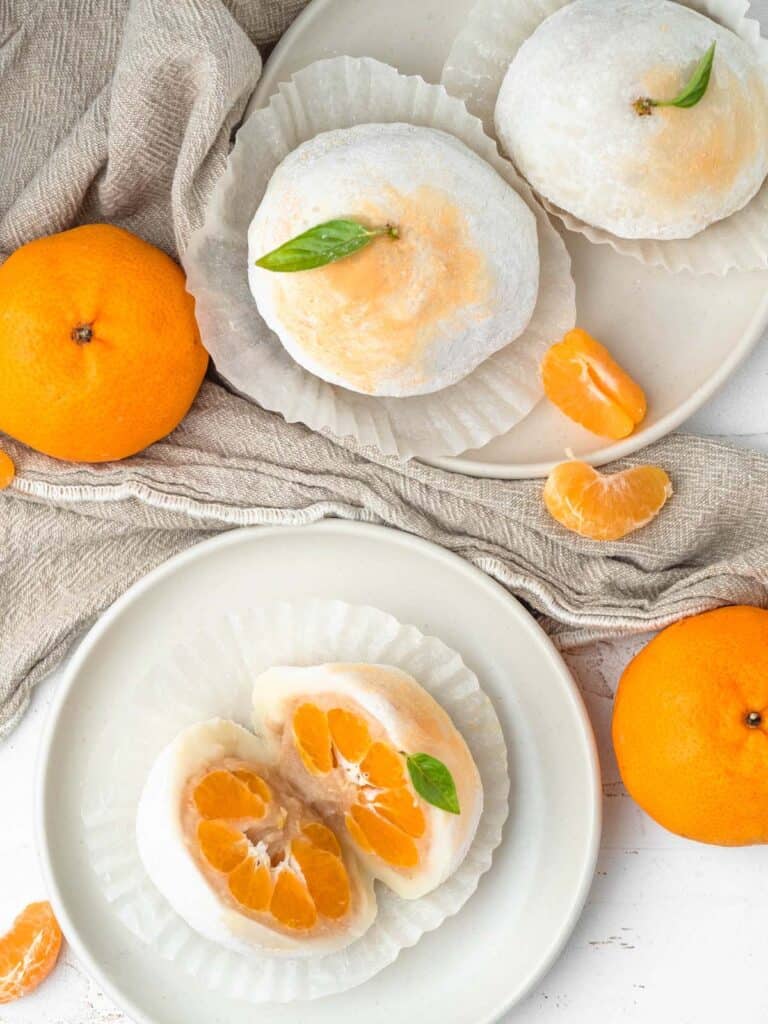
Tips on filling daifuku
Filling these mochi is the most difficult part of the whole process. Follow these tips below for a smooth path to mochi success!
Chill your white bean paste
The more time your white bean paste has time to chill, the more time it has had to thicken up. This is important as it will make wrapping your mandarins a lot easier.
If your white bean paste has cooled but is still very moist it probably hasn't been dried out enough. Make sure you give your bean paste enough time to thicken up in the saucepan before chilling.
Wear gloves or oil your hands
Mochi is very sticky and can be difficult to handle if you aren't prepared! I always wear gloves and oil my hands, this way the mochi won't stick to my hands. Always oil every surface your mochi is going to have contact with.
Dust in cornstarch
I like to wrap my mochi before it has had contact with cornstarch, this way it is a lot easier to seal as the dough is still very sticky. After you have successfully wrapped your mandarin in your mochi make sure you roll it in cornstarch, this will prevent the mochi from sticking to everything!
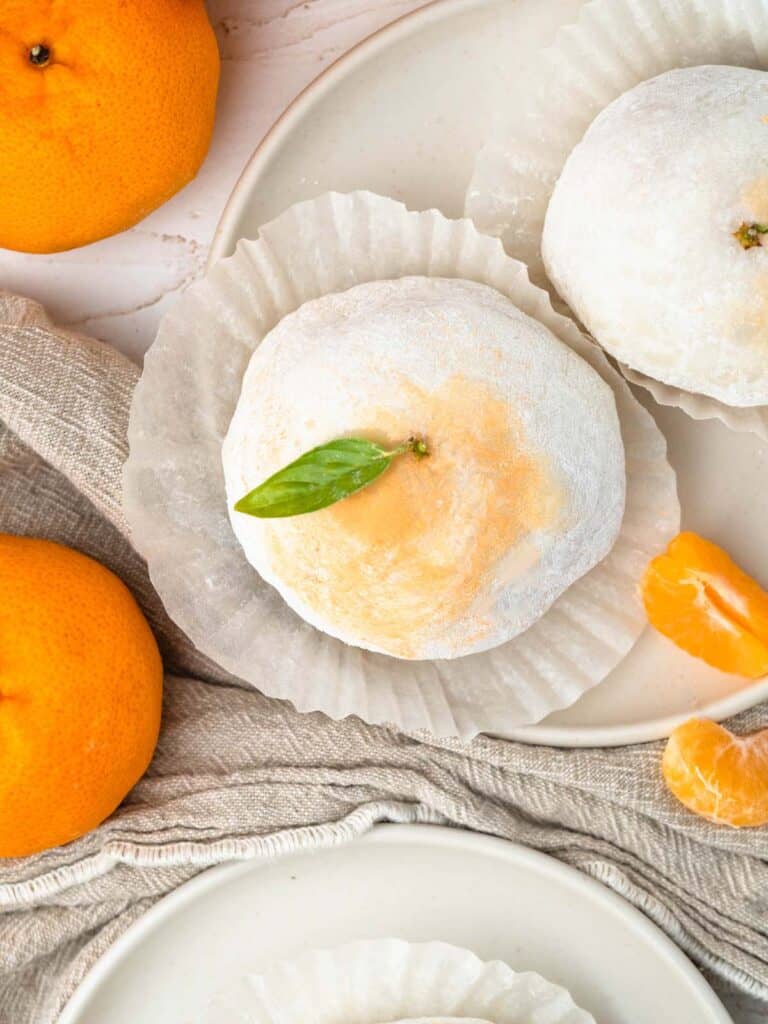
Frequently Asked Questions
How long do these last?
These should last up to 3 days when stored in an airtight container in the fridge. However, mochi is always best the day it's made as the texture is the softest and stretchiest.
As these mochi are filled with a moist filling they will soften up over time. I recommend eating them as soon as possible!
Can I fill these with something else?
Yes! You can fill the mochi skin with anything you like. My personal favorite is red bean-covered strawberries. But you can use any kind of fruit, from mangoes to kiwi!
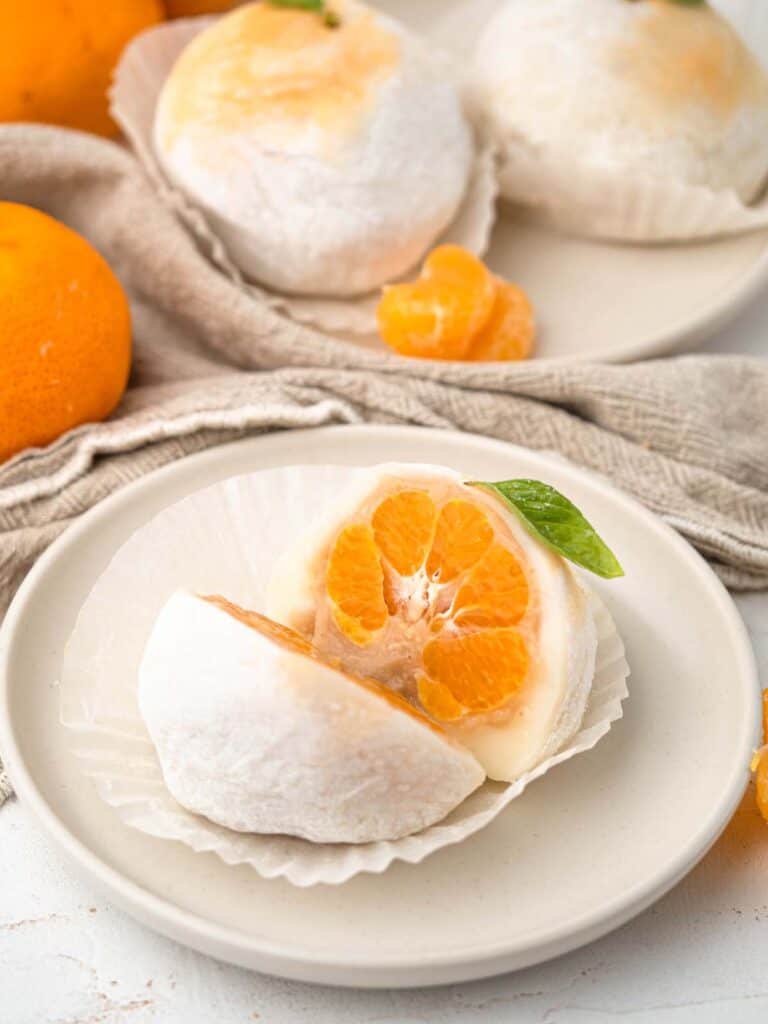
I don't have a microwave, can I cook this another way?
Yes! If you don't have a microwave you can pour the batter into a heatproof bowl and place it in a steamer. Steam for about 20 minutes, or until the mochi is no longer opaque and milky. Remove from the steamer and continue to follow the recipe as it's written.
Where can I find glutinous rice flour?
When making mochi, mochiko is the preferred glutinous rice flour. However, it can be difficult to find. If you have a Japanese grocer near you that will be your best bet! Otherwise it is fine to use regular glutinous rice flour. Regular glutinous rice flour is a common ingredient and can be found in most asian groceries.
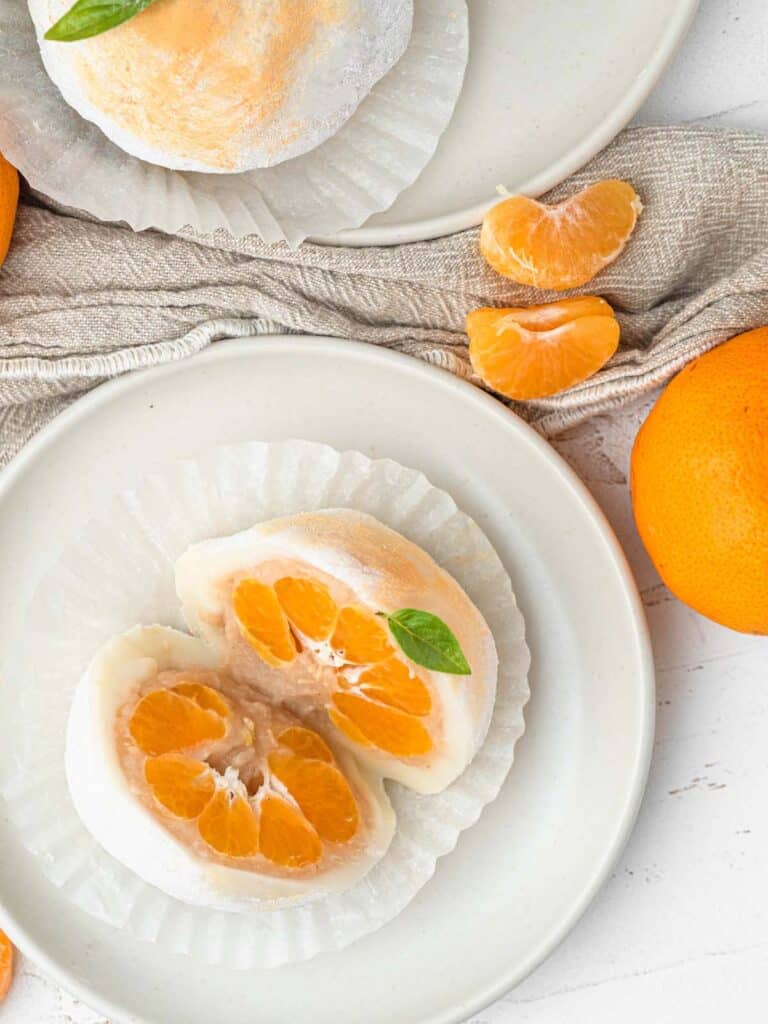
Let's Get Baking!
This mochi is the perfect balance of textures. It has a chewy and stretchy exterior, creamy bean paste, and a juicy fruit center. If you are a fan of mochi you have to give these a try!
If you liked this recipe make sure to leave me a comment and rating down below, I would love to know how you went.
Also, don't forget to tag me on Instagram @catherine.desserts and hashtag #cattycakes so I can see and share your desserts. Follow me on Facebook, Pinterest, Youtube, and TikTok for more of my baking creations and updates! Until next time... happy caking!
PrintMandarin Mochi
Soft and chewy mochi skin filled with sweet white bean paste and a whole juicy mandarin
- Prep Time: 30 minutes
- Cook Time: 15 minutes
- Total Time: 45 minutes
- Yield: 6 Mochi Balls 1x
- Category: Mochi
- Method: Easy
- Cuisine: Japanese
Ingredients
White Bean Paste
- 480g Butter or Lima beans, boiled and drained (approx 2 cans)
- 200g White sugar (1 cup)
- 1 tsp Vanilla extract
Assembly
- 6 small mandarins, peeled
Mochi Dough
- 130g Glutinous rice flour (1 cup)
- 240g Water (1 cup)
- 50g Sugar (¼ cup)
- 1 tbsp Vegetable oil
- Vegetable oil, for greasing
- Cornstarch, for dusting
Instructions
White Bean Paste
- Place the boiled and drained beans in the bowl of a food processor and pulse until smooth
- Add the sugar and blitz until well combined
- Transfer the puree into a small saucepan and cook over medium heat, stirring constantly, for 5-10 minutes until the sugar has dissolved and the mixture has thickened
- Cool completely
- Divide into 6 equal balls
- Wrap each peeled mandarin in a ball of white bean paste and place on a lined baking tray
- Chill in the fridge until the mochi is ready to be assembled
Mochi Dough
- Combine the glutinous rice flour, water and sugar (if you are using) together in a microwave-safe bowl and whisk to combine
- Cover with cling wrap and use a fork to pierce several holes
- Microwave for 2 minutes on high
- Remove from the microwave and mix
- Re-cover with cling wrap and microwave for another minute, or until the mochi is no longer opaque and milky in colour
- Mix/pound your mochi for a minute or two, with a wooden spoon, until stretchy and elastic
- Cool until warm to the touch and add the vegetable oil
- Knead with gloved hands until the mochi is soft and smooth
- Oil a baking tray with vegetable oil and divide the mochi into 6 equal balls
- Lightly flatten a mochi ball and place a wrapped mandarin in the centre
- Pull the edges of the mochi over the mandarin into the centre to seal
- Roll the mochi ball in the bowl of cornstarch and dust off any excess
- Repeat with the remaining mandarins and mochi
- Enjoy!


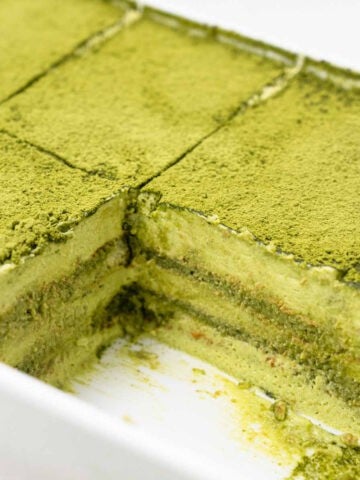
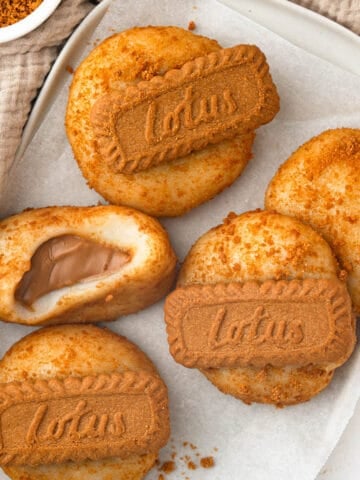
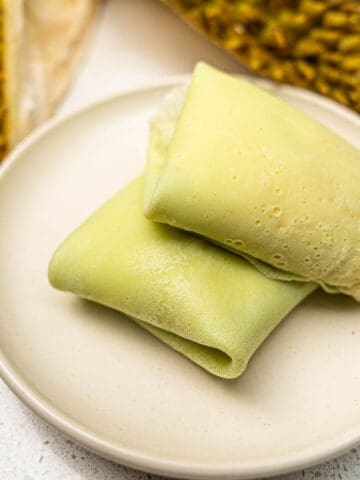

Comments
No Comments